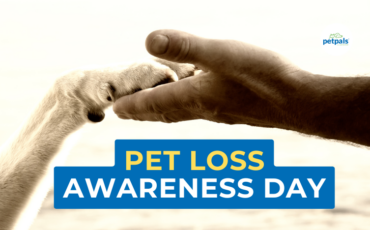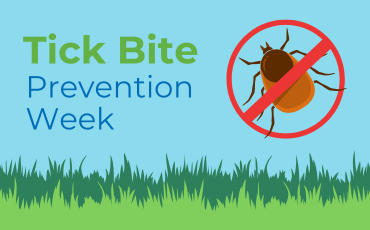Rabbit Awareness Week: How to Give Your Rabbit the Best Care
24th June 2025

Rabbit Awareness Week is a fantastic opportunity to learn more about the needs of our rabbits and ensure they are happy, healthy, and safe. Rabbits are intelligent, sensitive animals who thrive when their physical and emotional needs are met. In this blog, we’ll cover key areas of rabbit care—from diet and behaviour to creating a suitable environment, as well as how to protect your rabbit during hot weather.
🥕 Diet: The Foundation of Good Health
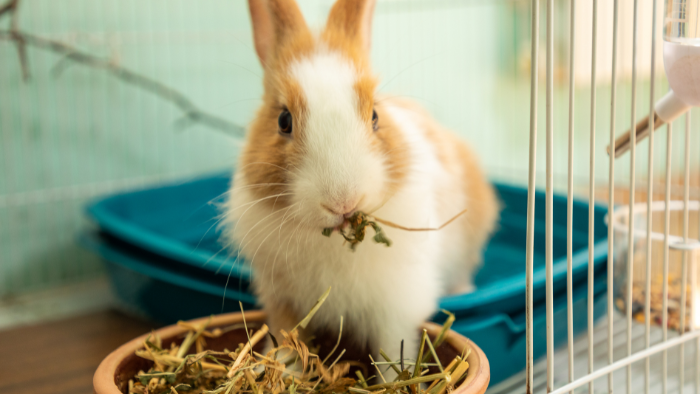
A proper diet is essential to keep your rabbit’s teeth healthy, their gut moving, and their body in good condition.
✅ Hay is the most important food
At least 85% of your rabbit’s diet should be good-quality hay or grass. This provides the fibre they need for digestion and keeps their teeth worn down.
✅ Fresh greens daily
Offer a variety of rabbit-safe leafy greens (such as spring greens, kale, parsley, and coriander). Avoid iceberg lettuce as it has little nutritional value.
✅ Pellets in moderation
Feed only a small amount of high-fibre pellets—too much can lead to obesity and dental issues.
✅ Fresh water always available
Provide water in a clean bowl or bottle, and check it regularly.
✅ Avoid sugary treats
Carrots and fruit should only be offered occasionally, in small quantities.
🐾 Understanding Rabbit Behaviour
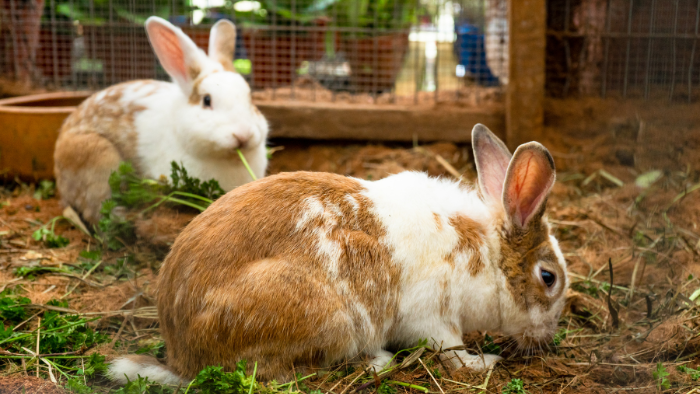
Rabbits are social and inquisitive animals. Understanding their behaviour helps ensure they feel secure and content.
💚 Companionship
Rabbits are best kept in pairs or groups. A neutered male and female often make a good match. Rabbits without companionship can become lonely and depressed.
💚 Exercise and enrichment
Rabbits need plenty of space and mental stimulation. Provide tunnels, platforms, cardboard boxes, and safe toys to encourage natural behaviours like digging, chewing, and exploring.
💚 Reading the signs
A happy rabbit will display behaviours like binkies (joyful leaps), tooth purring (a soft grinding sound of contentment), and relaxed body posture. Be alert for signs of stress or discomfort, such as hiding, aggression, or changes in eating or toileting habits.
Check out our in-house vet Dr. Sophie Bell’s free “Bunny Basics” course (suitable for children aged 5 to 12) This video introduces kids to the essentials of caring for and looking after their rabbits.
🏡 Creating the Right Environment
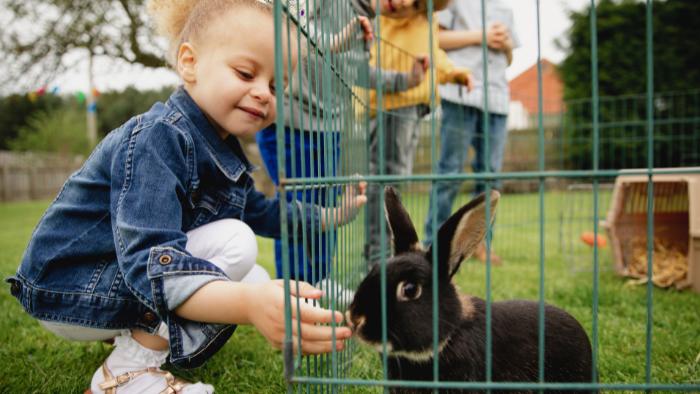
A suitable living space is key to your rabbit’s wellbeing.
🏠 Size matters
Your rabbit’s home should be spacious enough for them to stretch out fully, hop three times, and stand upright on their hind legs. A hutch alone is not enough—rabbits need access to a secure exercise run or free-roaming area.
🌱 Safety and shelter
Whether indoors or outdoors, their space should protect them from predators, harsh weather, and extreme temperatures. Provide hiding places and platforms for your rabbit to feel safe and in control of their environment.
🧹 Clean and hygienic
Regularly clean litter areas, bedding, and housing to reduce the risk of disease and flystrike.
🌞 Heatwave Care: Keeping Rabbits Cool
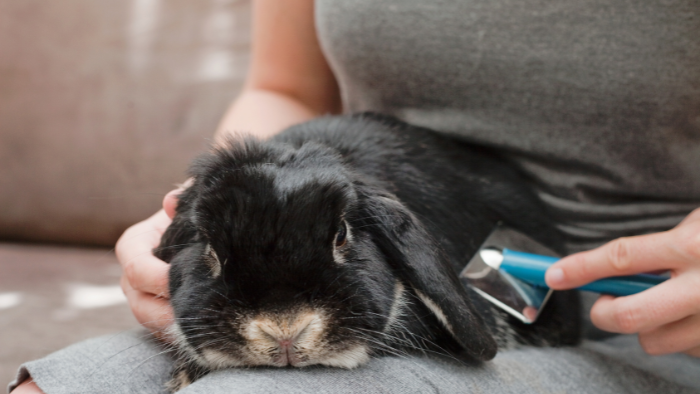
Rabbits are vulnerable to heatstroke in warm weather, keeping them cool is the best prevention.
✅ Provide constant shade
Ensure your rabbit’s hutch or run is completely shaded throughout the day. Move outdoor enclosures into permanent shade, or use sun umbrellas or reflective covers.
✅ Encourage airflow
Place runs where there’s a breeze. Indoors, you can use a fan nearby (never blowing directly on your rabbit) to improve air circulation.
✅ Fresh water at all times
Check and refresh water bowls and bottles regularly. Consider offering both types, as some rabbits prefer bowls in hot weather.
✅ Groom regularly
Removing excess loose fur helps reduce the insulating effect of their coat.
❗What to Do if You Suspect Heat Stroke: First Aid Tips
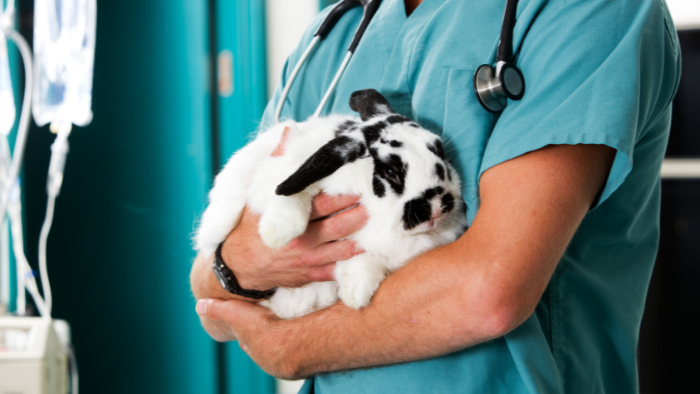
1️⃣ Move to a cooler location
Take the rabbit out of direct sunlight and place them in a shaded, well-ventilated area.
2️⃣ Cool the rabbit down
Gently dampen the ears and body using cool (not cold) water. Be careful to avoid getting water into the ear canals.
3️⃣ Create airflow
Use a fan or air conditioning to improve air circulation around the rabbit.
4️⃣ Provide water
Offer fresh, cool water in a bowl or bottle. Do not attempt to force the rabbit to drink.
4️⃣ Avoid wrapping them in a wet blanket / towel
Contrary to some advice, this can in fact trap heat and worsen the situation.
6️⃣ Seek veterinary care
Even if the rabbit seems to be improving, it’s essential to have them seen by a veterinarian as soon as possible.
🐰 Protecting Your Rabbit’s Skin
Summer conditions can pose risks for rabbit skin health:
🌱 Flystrike prevention

Heat and humidity increase the risk of flystrike—a potentially fatal condition where flies lay eggs on soiled fur or skin, and the hatching maggots cause severe damage.
- Check your rabbit at least twice daily, especially around the bottom and tail.
- Keep bedding clean and dry.
- Speak to your vet about preventative treatments.
☀️ Avoid sunburn
Rabbits with white or light-coloured ears and noses are more prone to sunburn. Ensure constant shade and never apply human sunscreen (some contain ingredients harmful to rabbits). If you’re concerned, consult your vet for advice on animal-safe products.
💬 Final Thought

Rabbit Awareness Week is a reminder that rabbits are complex animals who deserve thoughtful care. By providing the right diet, companionship, environment, and seasonal protection, you can help your rabbit live a happy, healthy life.
If you’d like advice about your rabbit’s care or environment, or are looking for a professional, trained pet sitter whilst you are away – please get in touch. We’re always happy to help.
Alternatively, many of our franchises also offer small animal home boarding services – providing a safe and caring home-from-home for your rabbit whilst you’re away.
If you’d like more in-depth guidance on rabbit care — including how to recognise pain and illness, identify common conditions, and manage health and husbandry needs — take a look at Dr. Sophie Bell’s two-hour “Healthy Bunnies” course.

